Have you ever seen a shortlived ephemeral flower? Chenshan Botanical Garden ~ Desert Plant Pavilion
Have you ever seen a short-lived ephemeral flower? Chenshan Botanical Garden ~ Desert Plant Pavilion
The Desert Plant Pavilion covers an area of 4,320 square meters, with the highest point reaching 19 meters. The Desert Plant Pavilion is divided into three areas, namely the Australian Plant Pavilion, the African Plant Pavilion and the American Plant Pavilion. Is this the common cactus we see? It feels like walking into a watermelon garden.
The Desert Plant Pavilion covers an area of 4,320 square meters and is up to 19 meters high. The Desert Plant Pavilion is divided into three areas, namely the Australian Plant Pavilion, the African Plant Pavilion and the American Plant Pavilion.
When you enter the Desert Plant Pavilion, you will be attracted by a large cactus plant.
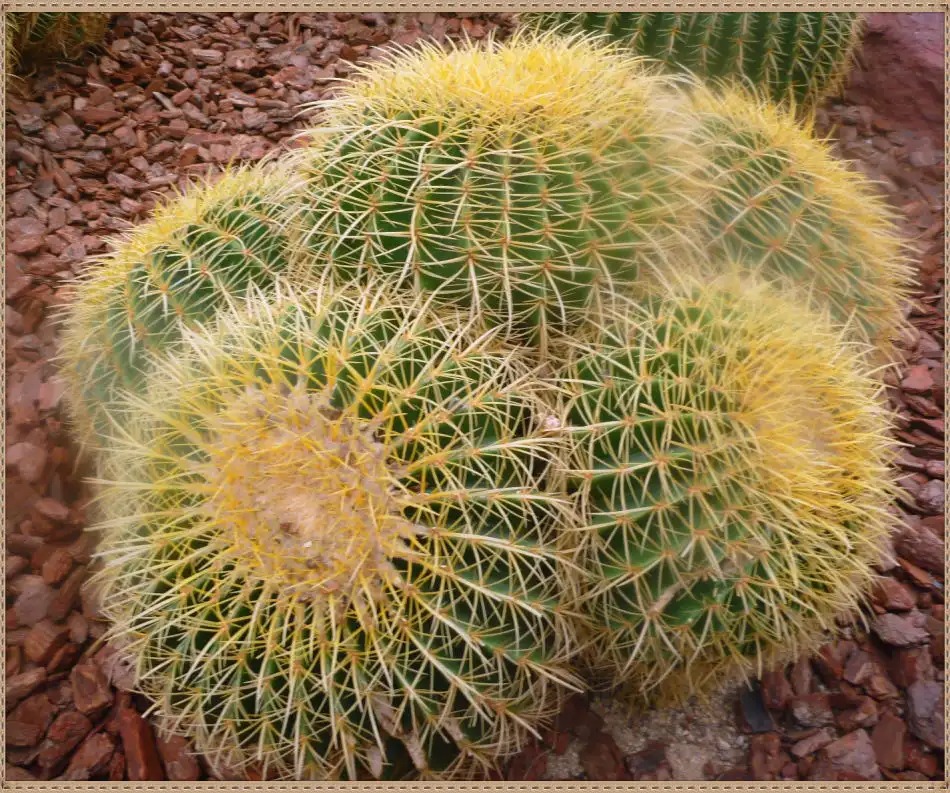 P1060258
P1060258
If you look closely, they are not the same, with different textures and colors;
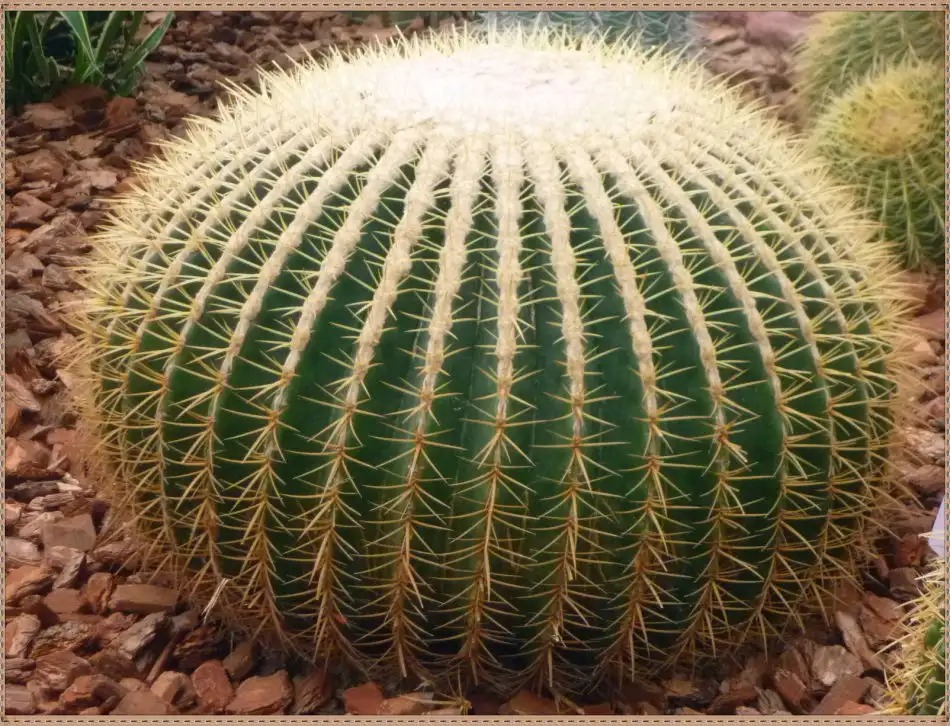 P1060259
P1060259
Is this the common cactus? It feels like walking into a watermelon garden.
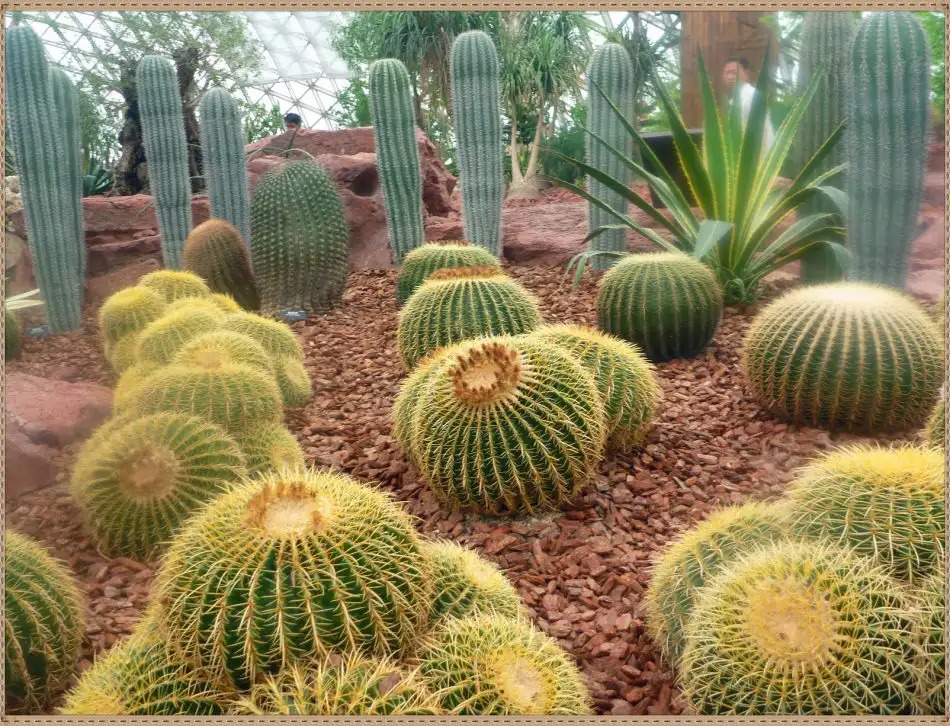 P1060260
P1060260
Cactus is a dicotyledonous plant belonging to the Cactaceae family. Cactus has a long lifespan and a large size. Some species can live for more than 500 years and grow into a giant ball with a diameter of two or three meters. Cactus can also be eaten.
Medicinal and health-care effects: Cactus is cold in nature and bitter in taste. It contains triterpenes, malic acid, succinic acid, potassium carbonate and other ingredients. It has the effects of promoting qi and blood circulation, nourishing the stomach, and clearing away heat and detoxification.
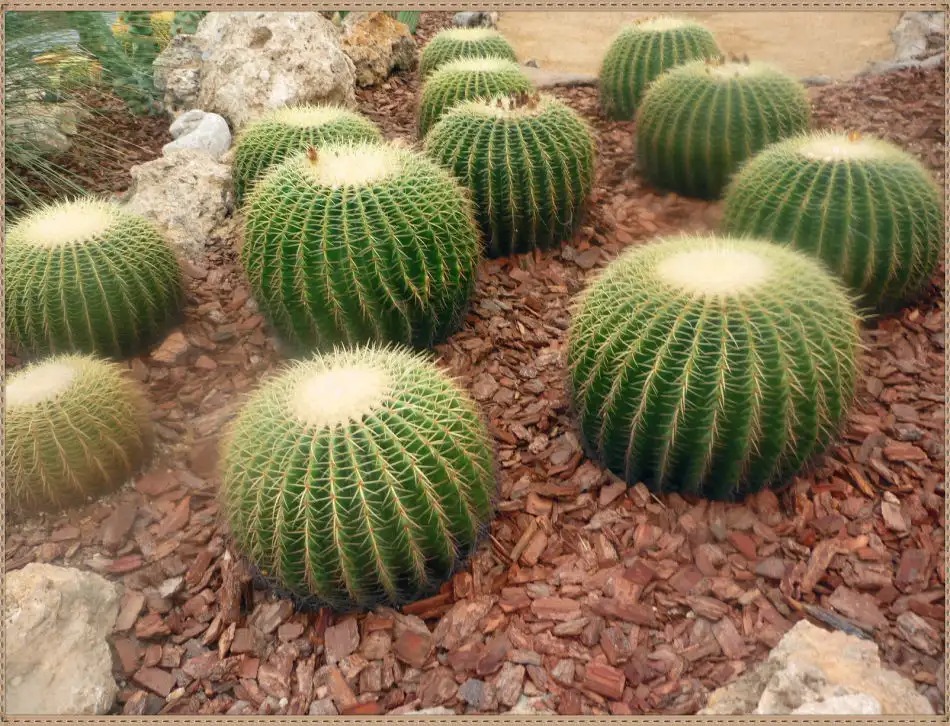 P1060261
P1060261
The genus Gymnocalyx of the Cactaceae family
is native to the Andes in northern Argentina and southern Bolivia. The plant is solitary, oblate to spherical, with a diameter of 25-30 cm, dark green in color, and with 20-30 conical protrusions. There are 8-10 slightly curved conical thorns and 1-3 central thorns; new thorns are purple-red-brown, and old thorns are gray. In spring, white or light pink bell-shaped flowers bloom on the areoles near the center of the top of the ball, with a diameter of 3.5-4 cm.
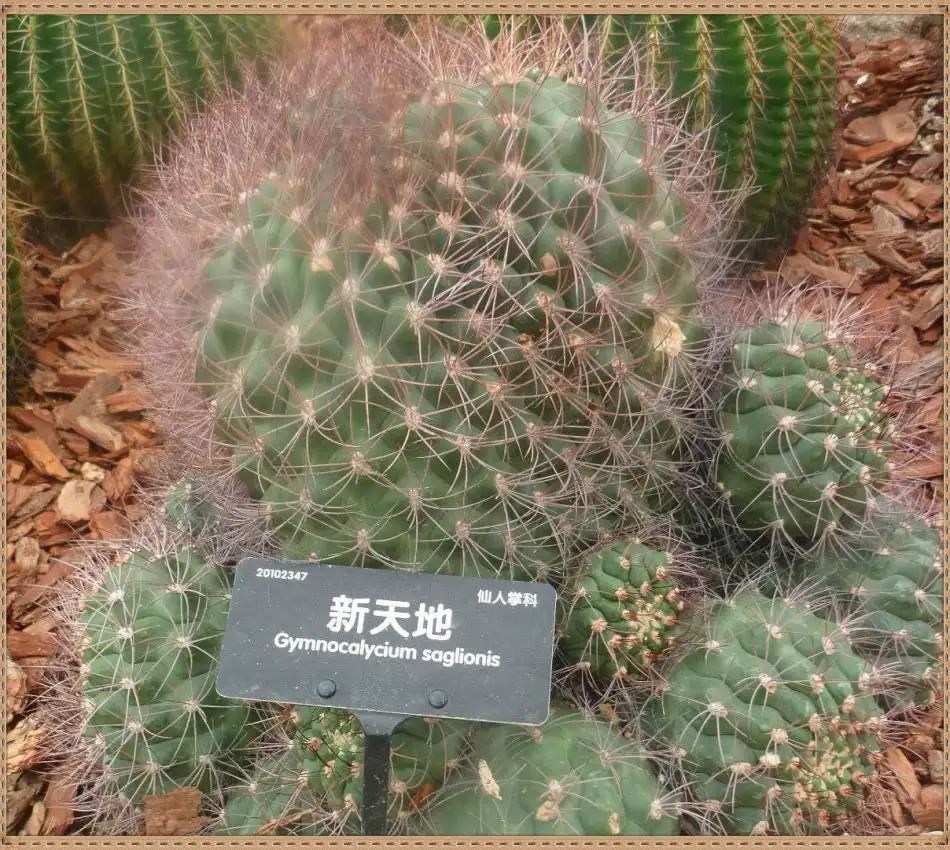 P1060262
P1060262
Liuliwan is a plant of the genus Opuntia in the Cactaceae family
. The height of an adult plant can reach 70-80 cm and the width is 40-50 cm. It is a large plant. It has 6 straight red thorns and 1 thick medium thorn, 5-6 cm long. It blooms from spring to summer, and the flowers are yellow. It likes a warm and sunny environment, and is resistant to strong light and moisture. Pay attention to the amount of watering. It has average cold resistance, and should be kept warm when the temperature is low.
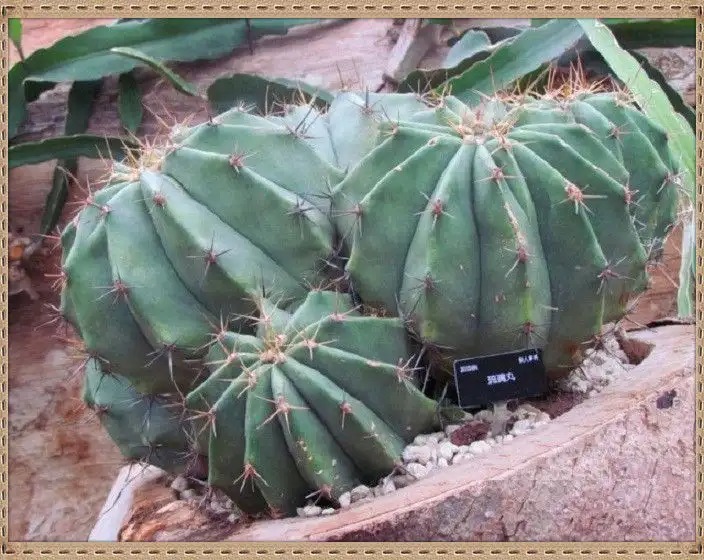 P1060256
P1060256
The unique sand-dwelling plants in the museum compete for beauty;
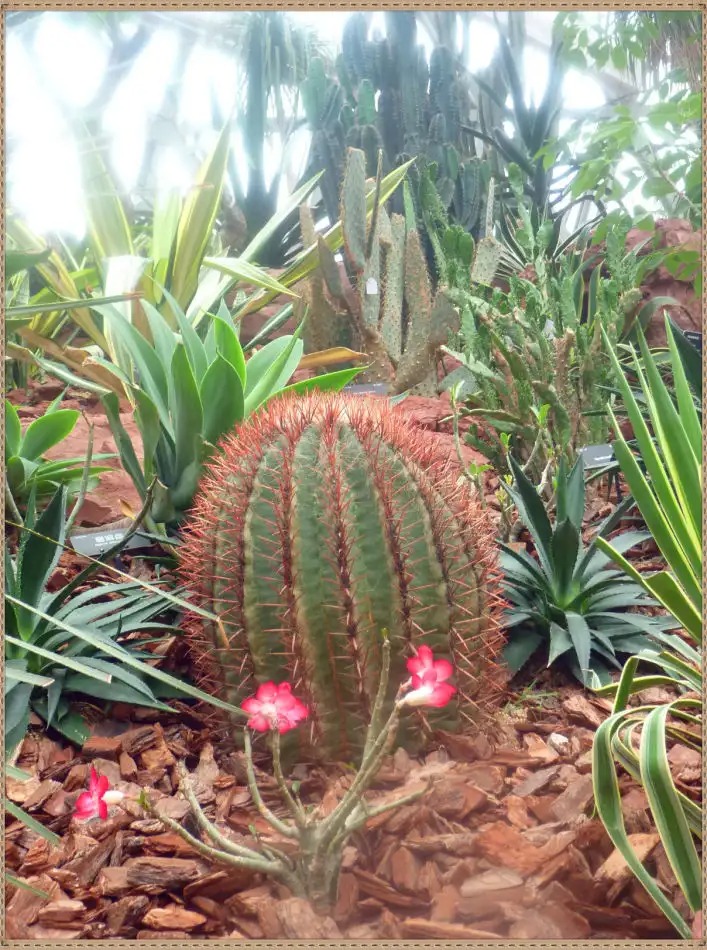 P1060263
P1060263
The giant
saguaro is a giant cactus plant native to the southwestern United States. It is often seen in American "Westerns". It is an important living resource for the Native Americans. According to statistics, 72 tribes eat the fruits of the giant saguaro, and some tribes must rely on its fruits for two months a year. In addition, it has medicinal and building material uses.
The giant saguaro grows slowly. In the wild, it takes 3 years for the seeds to germinate before it grows to 1 meter high. It grows slightly faster afterwards and can only bloom after 50 years. The practice of several desert botanical gardens in China shows that it is difficult to transplant. Therefore, it has become one of the most spectacular but also the most mysterious species in the desert plant area.
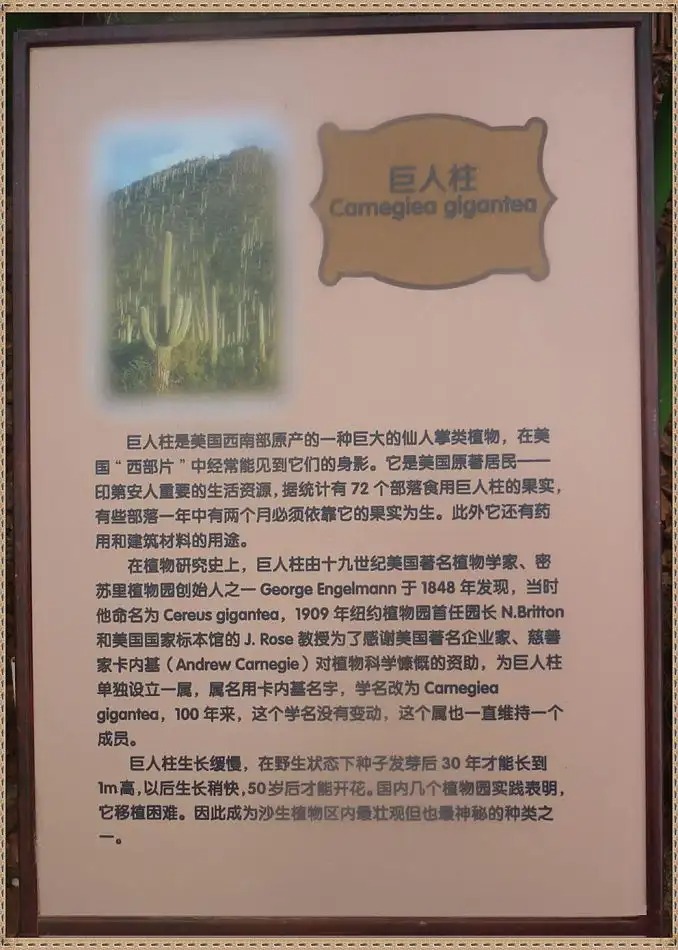 P1060264
P1060264
This is the "Giant Column";
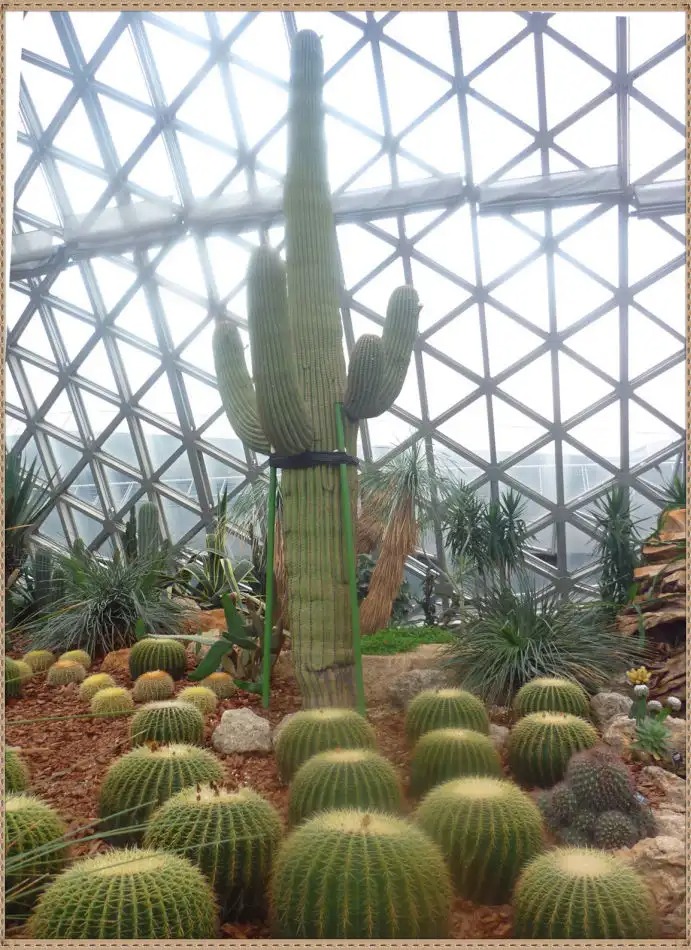 P1060265
P1060265
Because it is so high, it is supported by branches all around to prevent it from falling over.
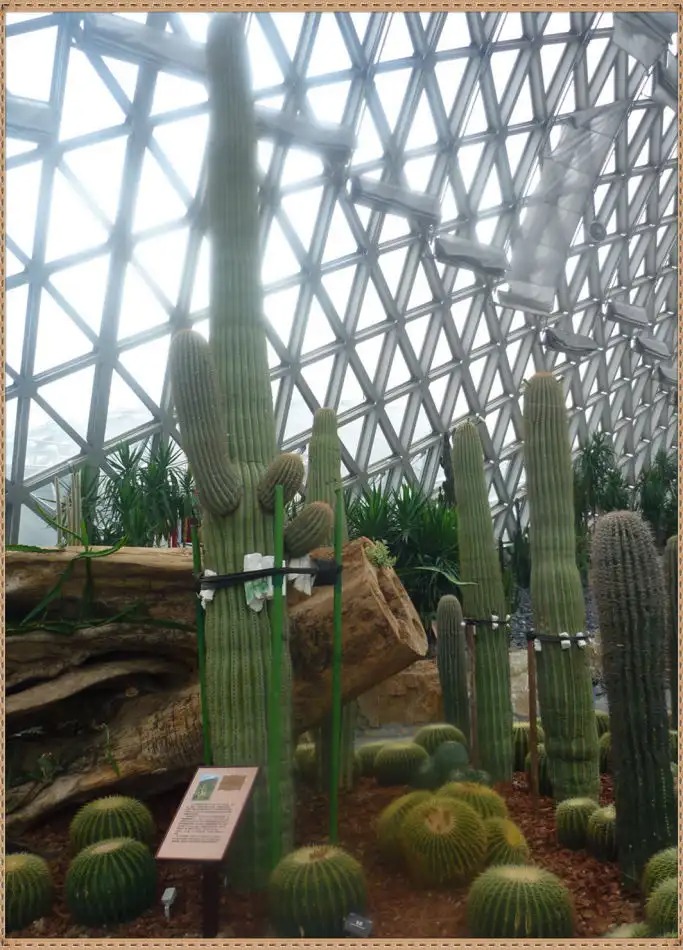 P1060266
P1060266
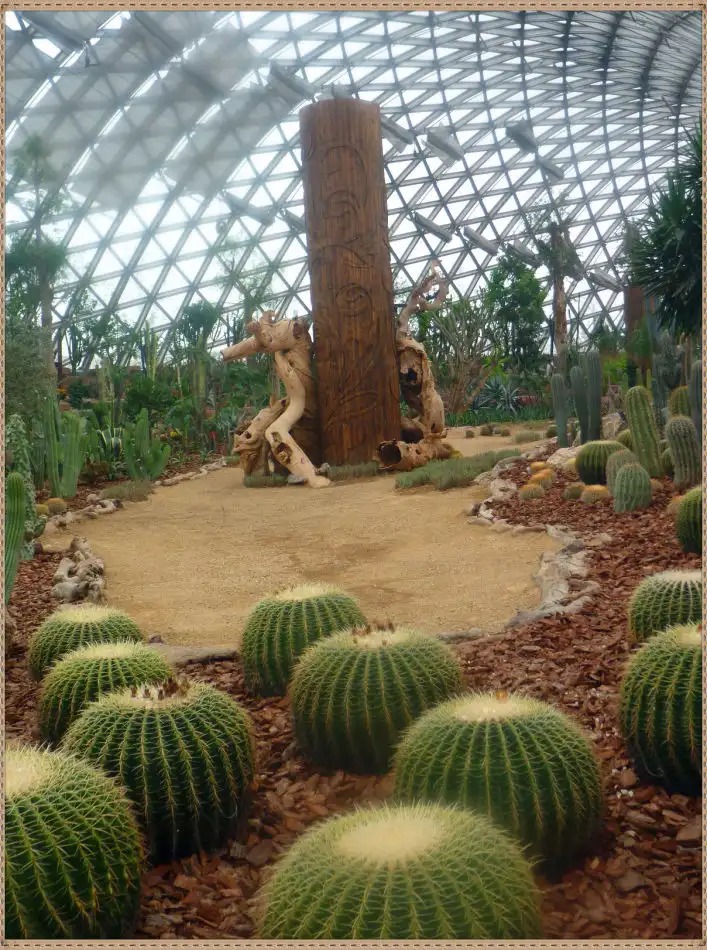 P1060268
P1060268
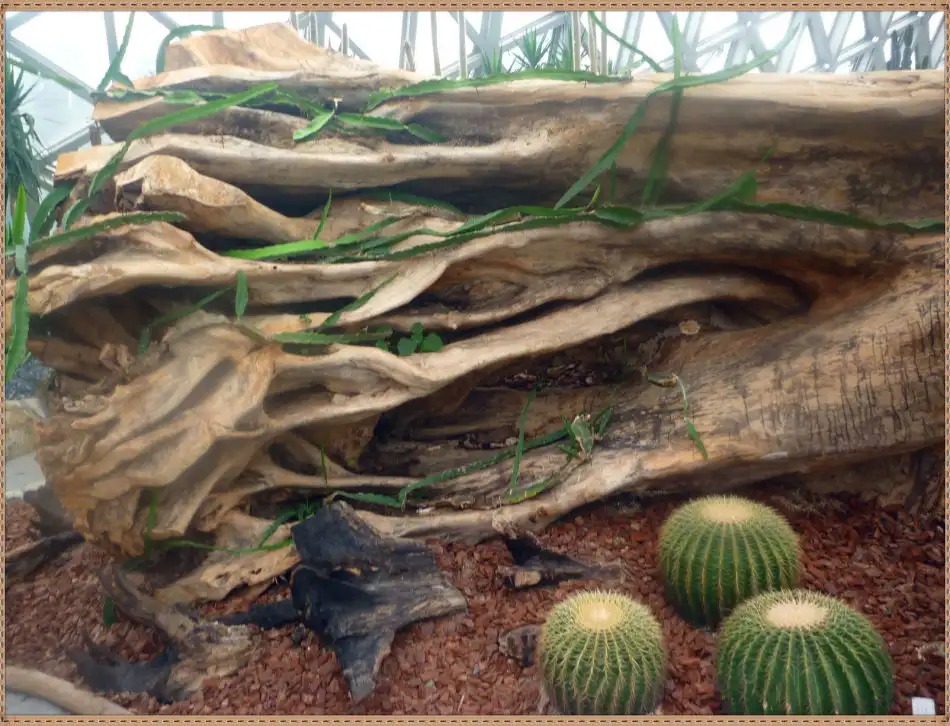 P1060269
P1060269
Survive among the rocks;
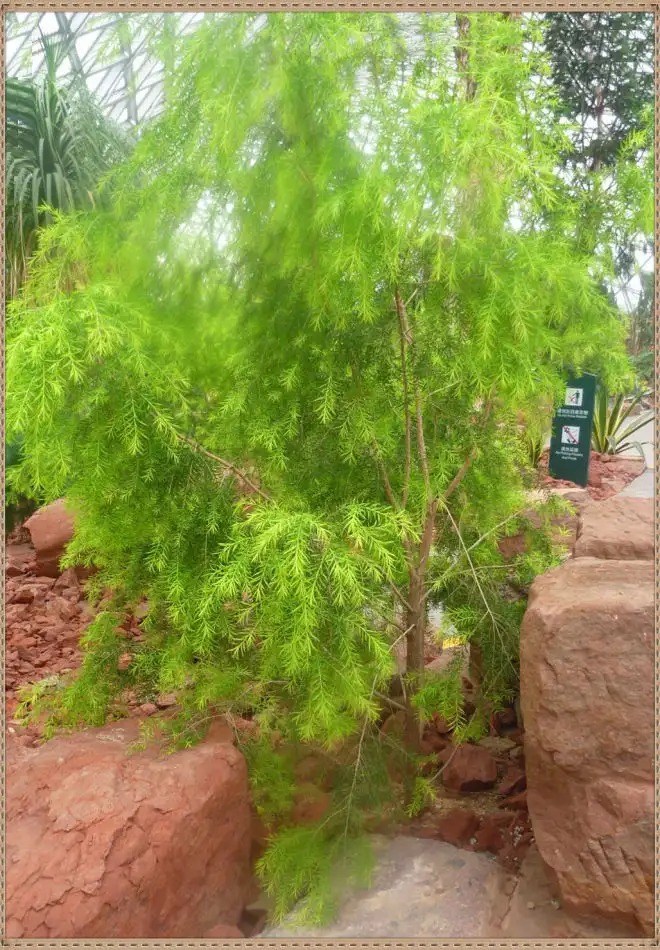 P1060270
P1060270
Some rare plants, this is probably the tallest plant in the Desert Museum;
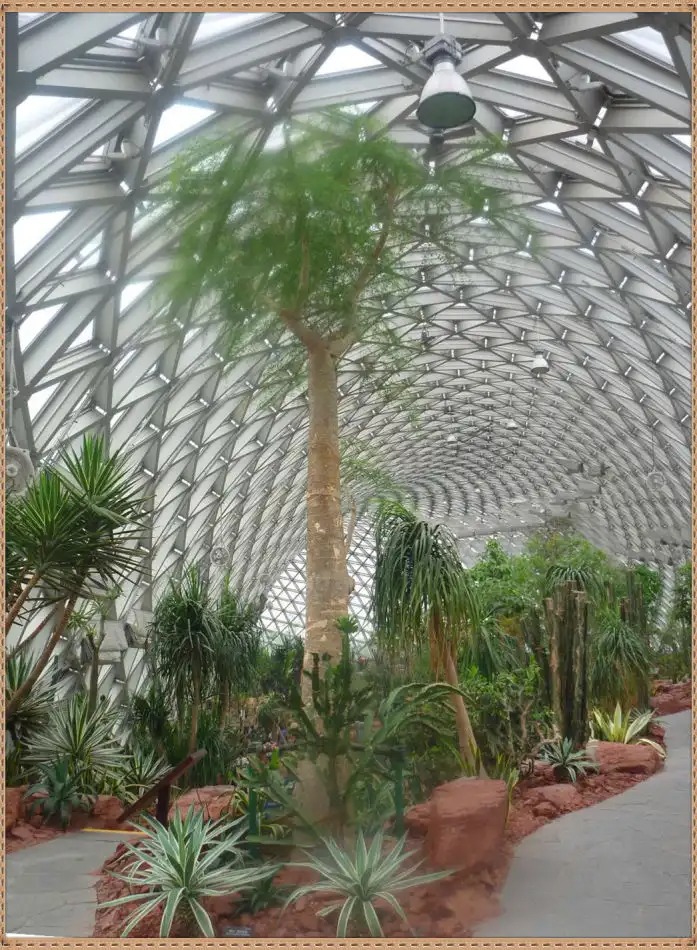 P1060271
P1060271
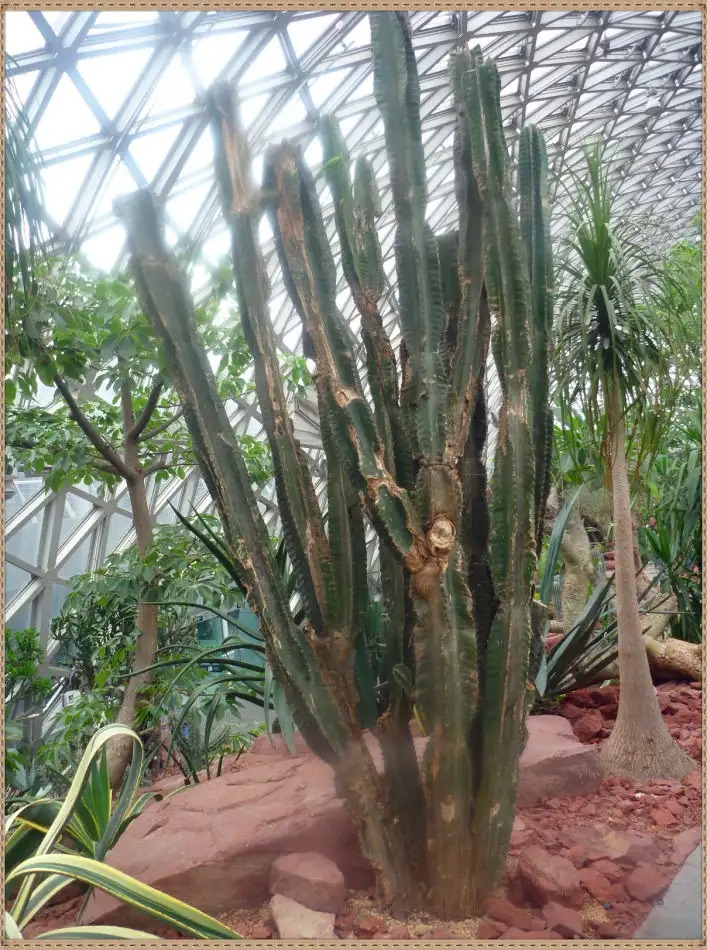 P1060272
P1060272
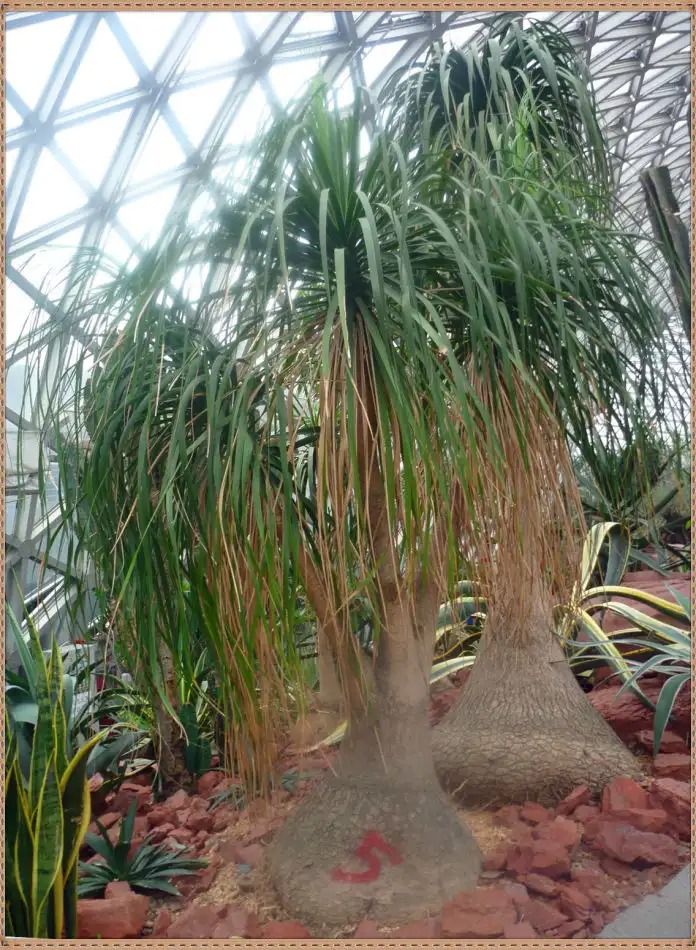 P1060273
P1060273
The Queensland Bottle Tree
is also known as the Buddha Belly Tree, Bottle Tree, and Spindle Tree. It is native to Australia. Its trunk is several meters high and swollen in the middle. It is thinner at the top and bottom, and looks like a huge vase, which is very similar to the belly of Maitreya Buddha. Therefore,
it is called the "Buddha Belly Tree". The Queensland Bottle Tree, which represents the Australian flora, has a large belly and can hold 2,000 kilograms of water. It can be said that there is no other plant in the world that can store more water than it.
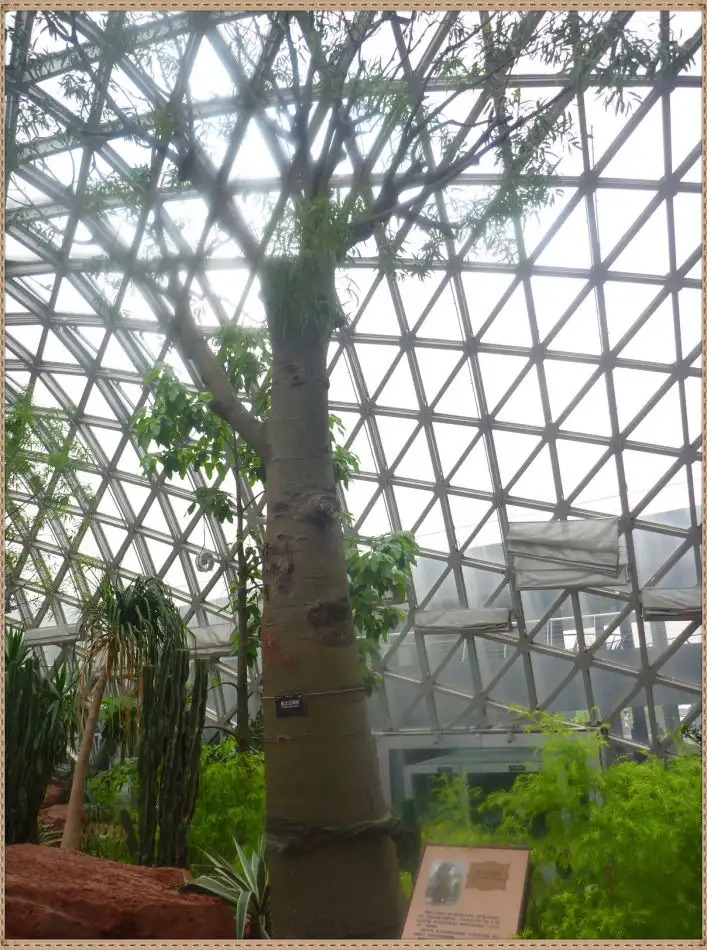 P1060274
P1060274
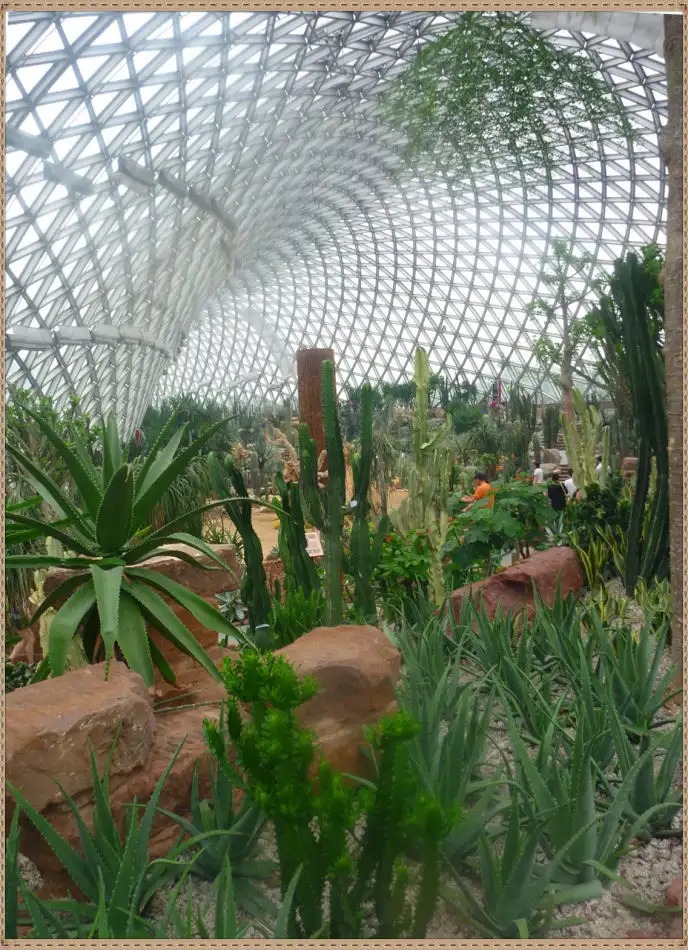 P1060275
P1060275
After admiring the whole way, it seems that we have reached the end, but unexpectedly, when we turn around the curved pavilion, we find that there are many more;
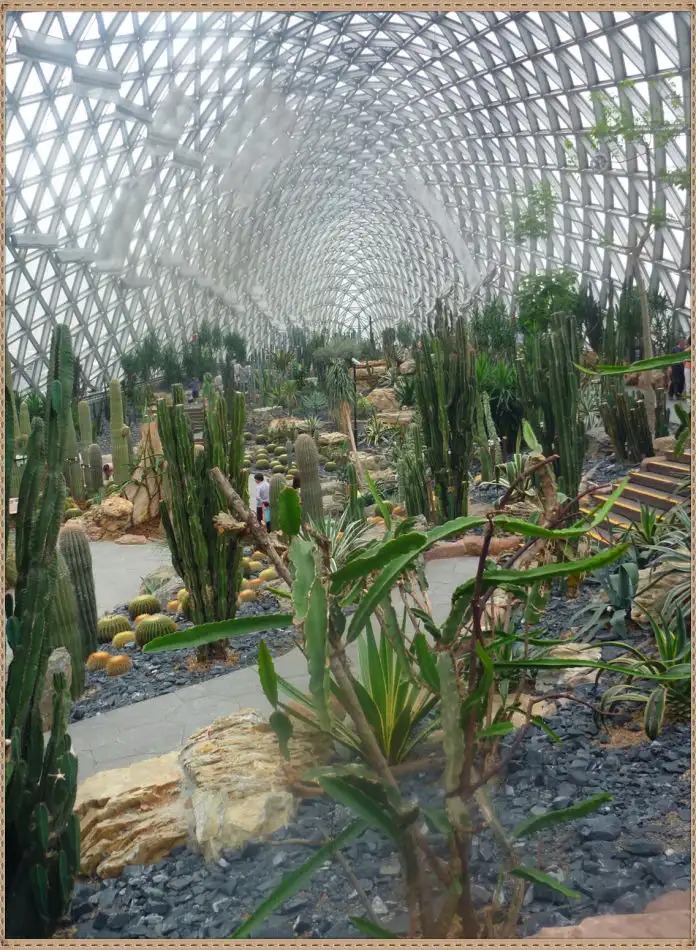 P1060276
P1060276
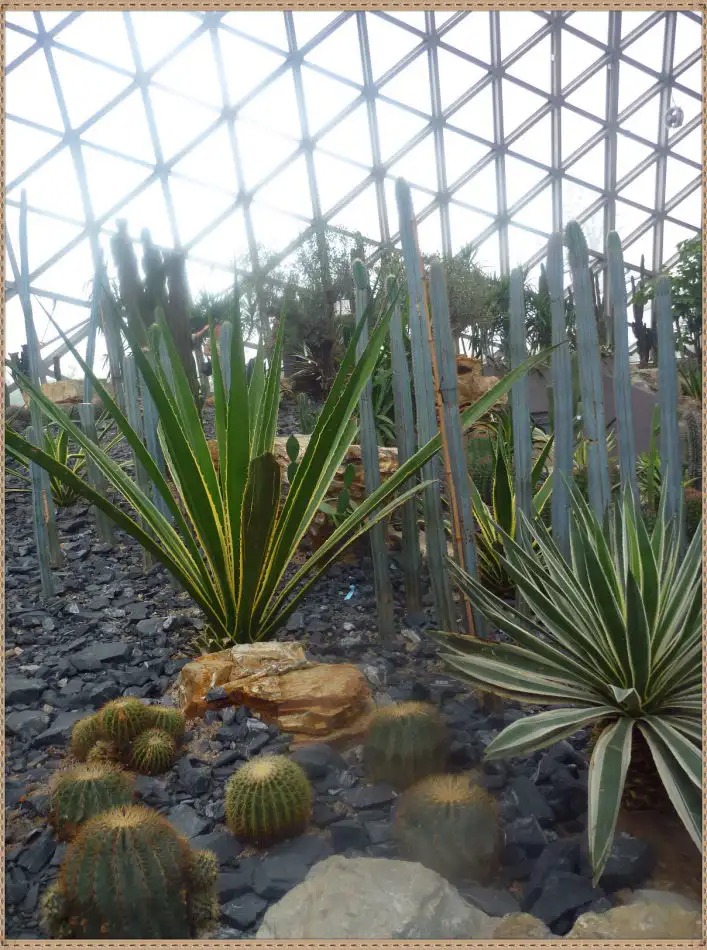 P1060277
P1060277
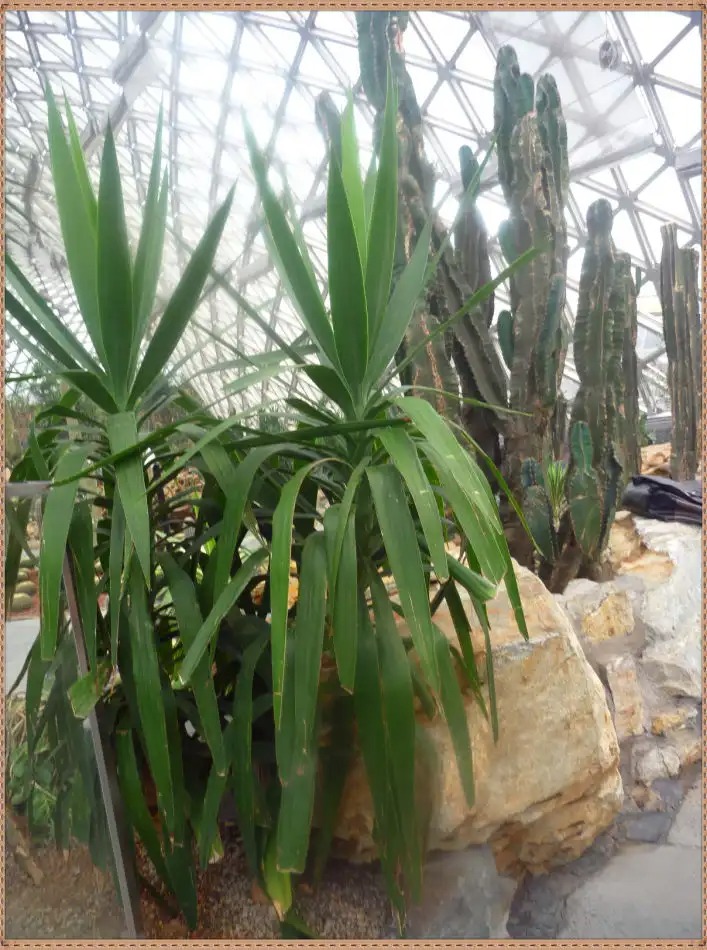 P1060278
P1060278
Euphorbia euphorbia is
also known as unicorn horn and jade unicorn. Its stems and leaves contain white latex and are poisonous. It is native to India and is now cultivated in various places.
It has beautiful green leaves, fleshy stems and leaves, and an elegant plant shape, which resembles the unicorn in ancient legends, so it is named Jade Unicorn. The fleshy modified stem is irregularly palm-shaped and fan-shaped, green when young, yellow-brown and woody when old, and the top and edges of the modified stem are densely covered with fleshy leaves.
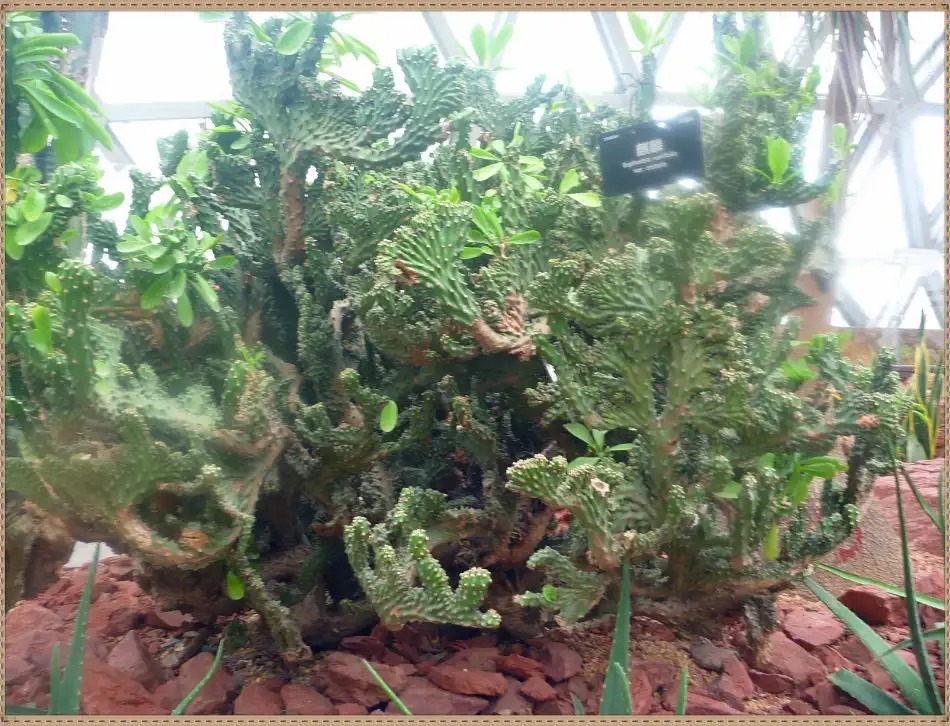 P1060279
P1060279
The original name of pitaya is Qinglongguo or Honglongguo
. Pitaya tree is a plant of the genus Triangular Column of the Cactaceae family. It is native to tropical desert areas in Central America such as Brazil and Mexico and is a typical tropical plant.
Pitaya is a plant introduced from Southeast Asia to Taiwan, and then improved and introduced from Taiwan to Hainan Province and Guangxi and Guangdong in southern China for cultivation.
Pitaya is named for its fleshy scales that resemble the scales of a dragon. When its smooth and huge flowers bloom, the fragrance is overflowing, and potted plants give people a sense of auspiciousness, so it is also called "auspicious fruit".
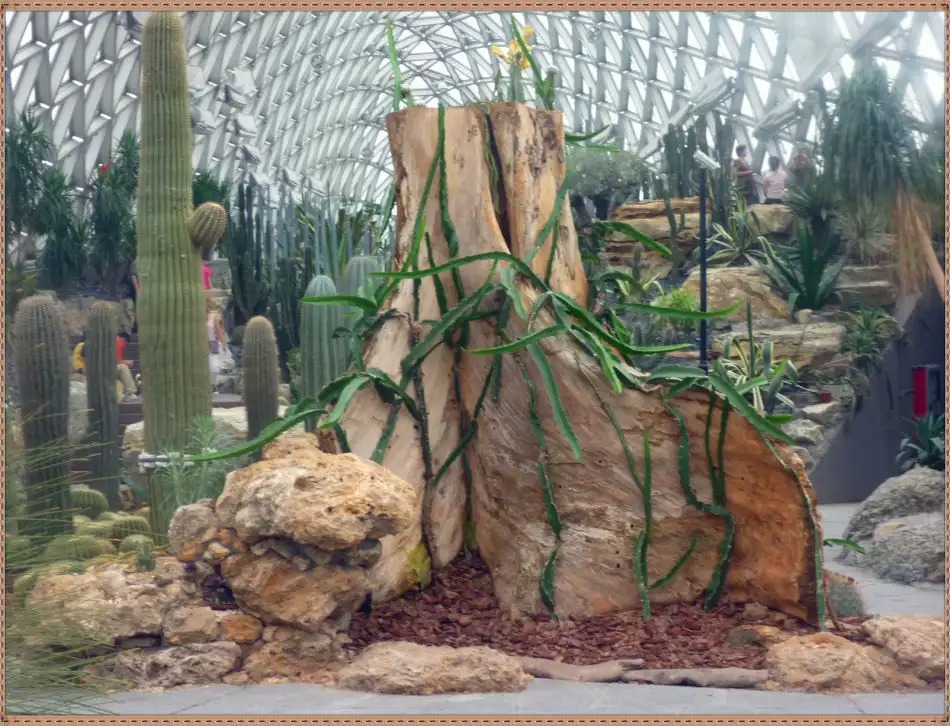 P1060280
P1060280
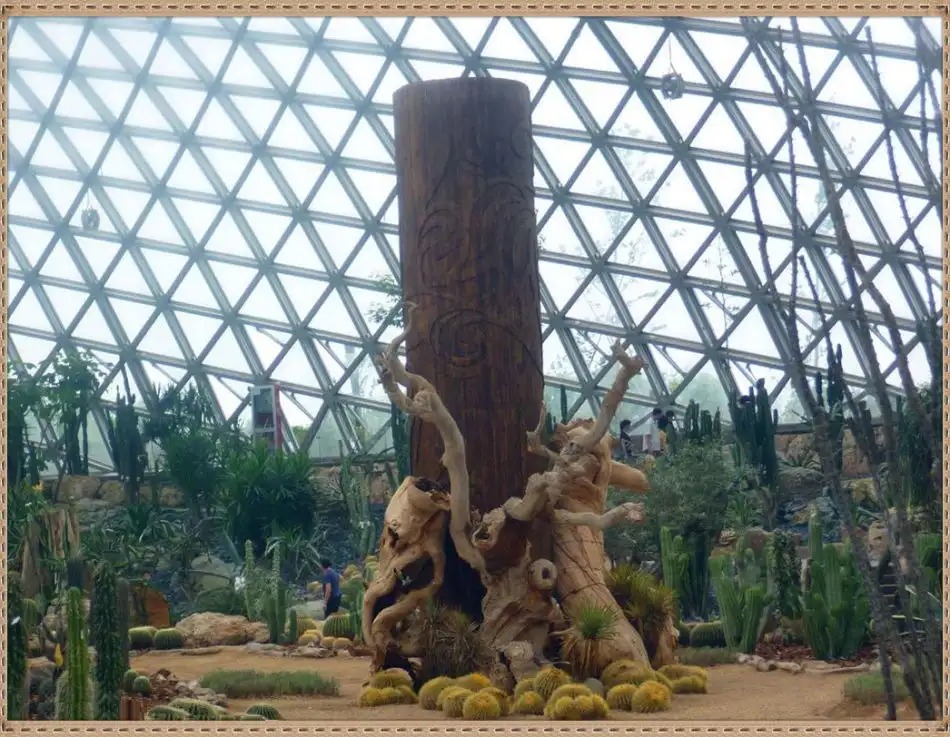 P1060281
P1060281
Plants in warm pots in a greenhouse;
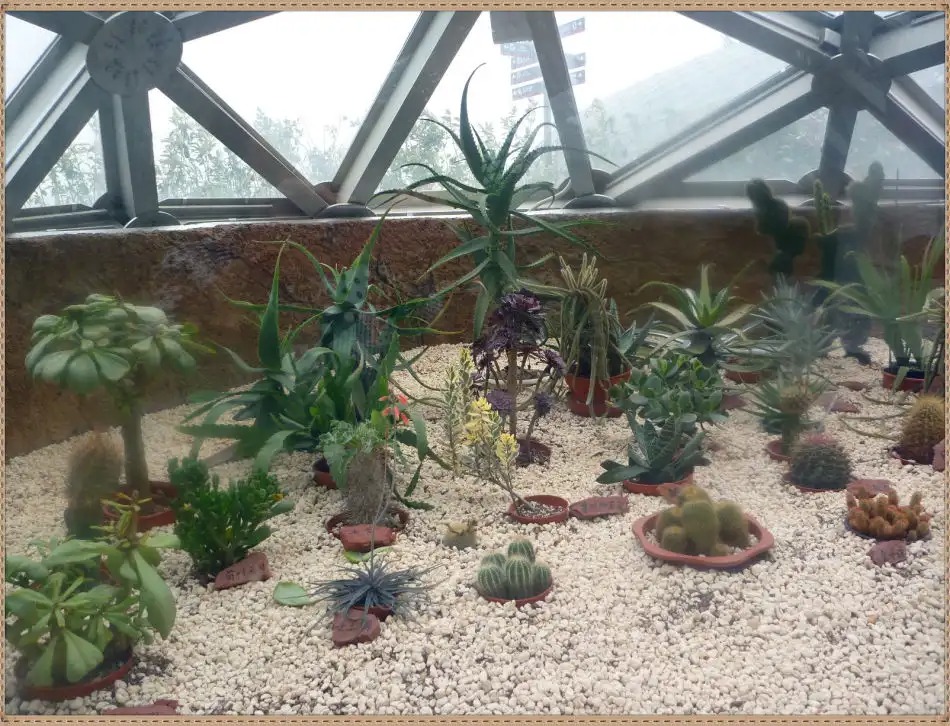 P1060282
P1060282
Desert rose
, also known as Tianbao flower, is a succulent plant of the genus Desert Rose in the Apocynaceae family. It is native to Kenya in Africa. It likes high temperature, dryness and a sunny environment. It is resistant to heat but not cold.
It is named Desert Rose because its origin is close to the desert and it is as red as a rose. The shape of Desert Rose is like a blooming rose, with various shapes, magnificent and magical. It is a pure natural strange stone.
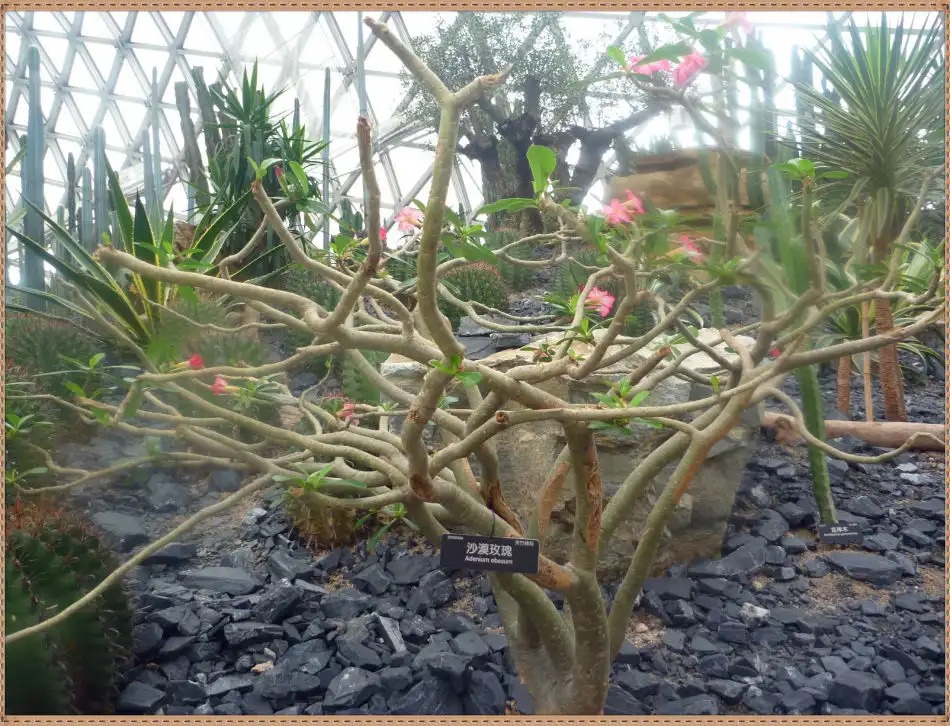 P1060283
P1060283
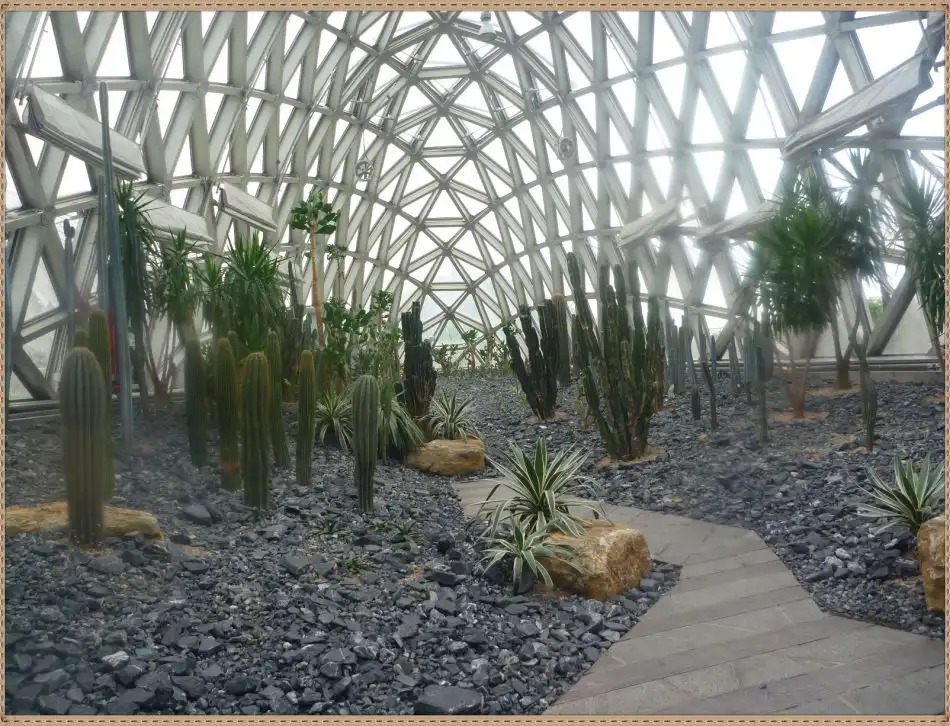 P1060284
P1060284
Sansevieria columnaris and Aloe vera
Aloe vera
is native to northern Africa and is now widely cultivated in the West Indies of South America. It is also cultivated.
Aloe vera tastes bitter and has a cold nature and has multiple medicinal values.
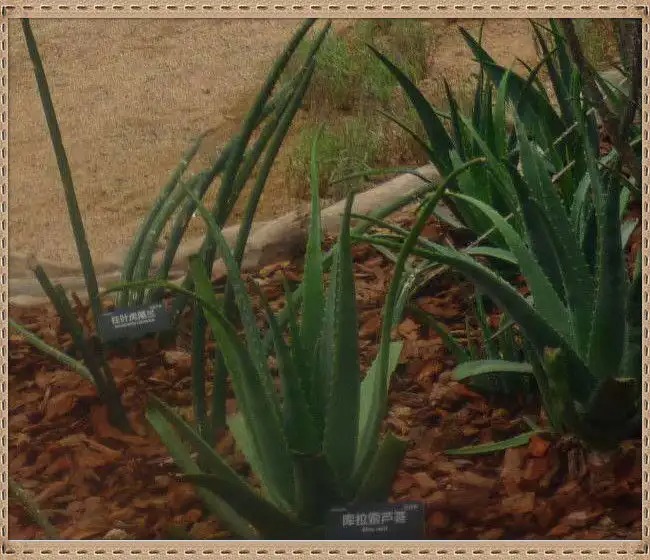 P1060285
P1060285
The original species of Euphorbia genus Euphorbia in the Euphorbiaceae family
is also known as Jade Kylin and Kylin Horn. It has a flat, fan-shaped or cockscomb-shaped fleshy stem, which is green in color and has obovate leaves. Most species in this family are poisonous.
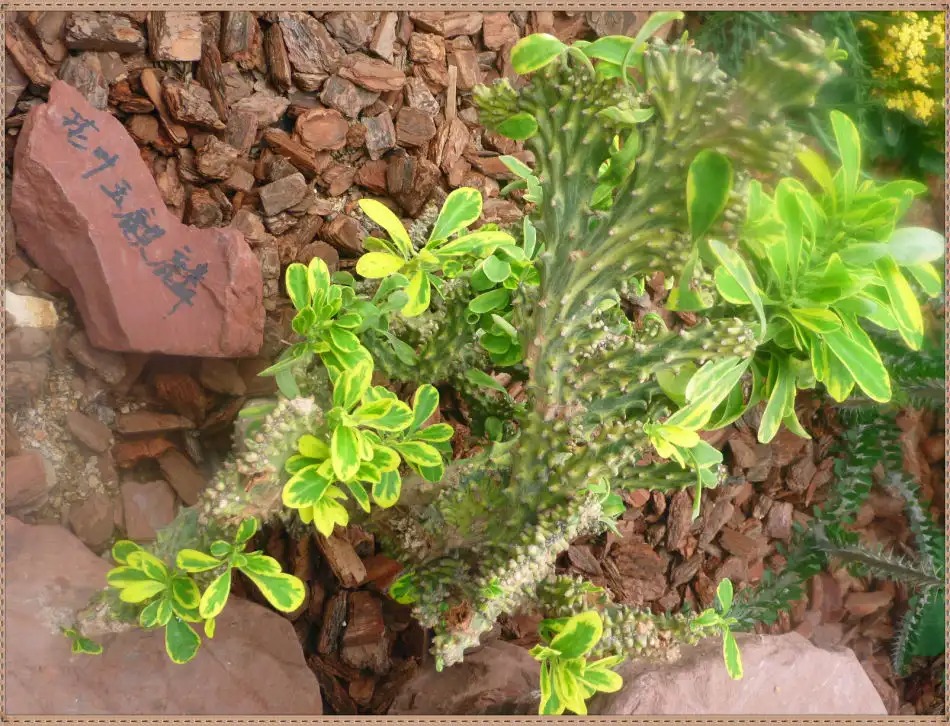 P1060286
P1060286The Jade Palace is
a small aloe plant of the Liliaceae family. It is native to Madagascar. Its stems are erect at first and then creeping. Its leaves are spirally alternate, and the top of the stem is arranged into a relatively tight rosette leaf disk. The Jade Palace is small and delicate and easy to cultivate. Therefore, it has become a new species of Aloe that has been rapidly popularized in recent years. It can be cultivated by ordinary families, but its medicinal value is not great.
(Note: It is the one above in the picture)
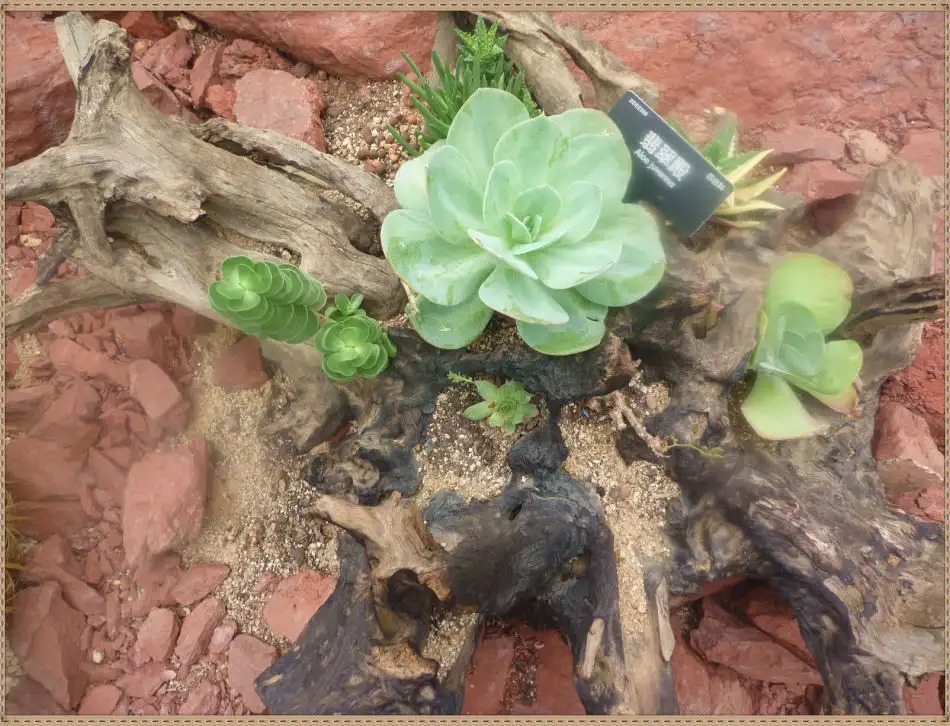 P1060287
P1060287
The large-leafed lotus
is native to Tenerife, one of the Canary Islands in the Atlantic Ocean. It likes a humid environment and requires high air humidity. However, the soil in the pot cannot be too wet. It can be cultivated outdoors in a shade shed in warm seasons. In winter, it should be placed in a cool place with a temperature not exceeding 10°C. The large-leafed lotus is shade-tolerant, has a large leaf disk, and has beautiful leaf color, making it an ideal indoor foliage plant.
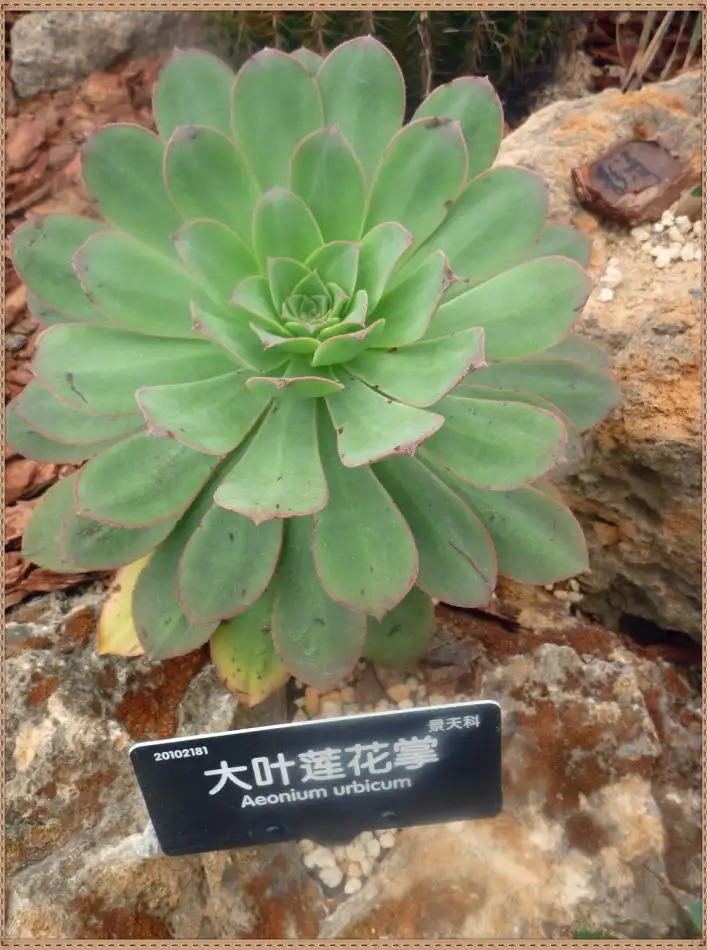 P1060288
P1060288
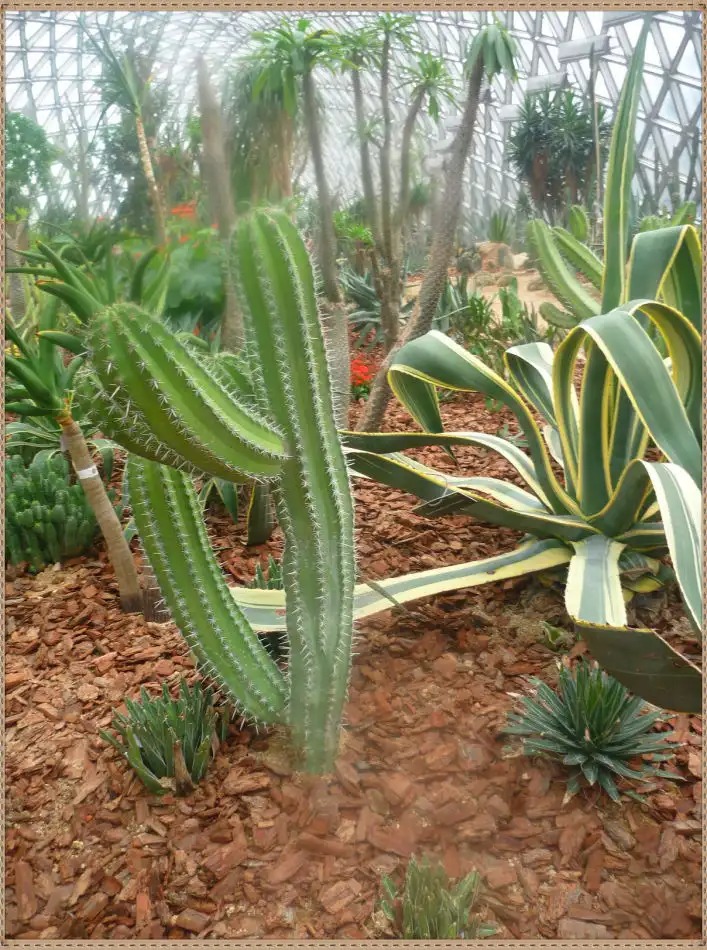 P1060289
P1060289
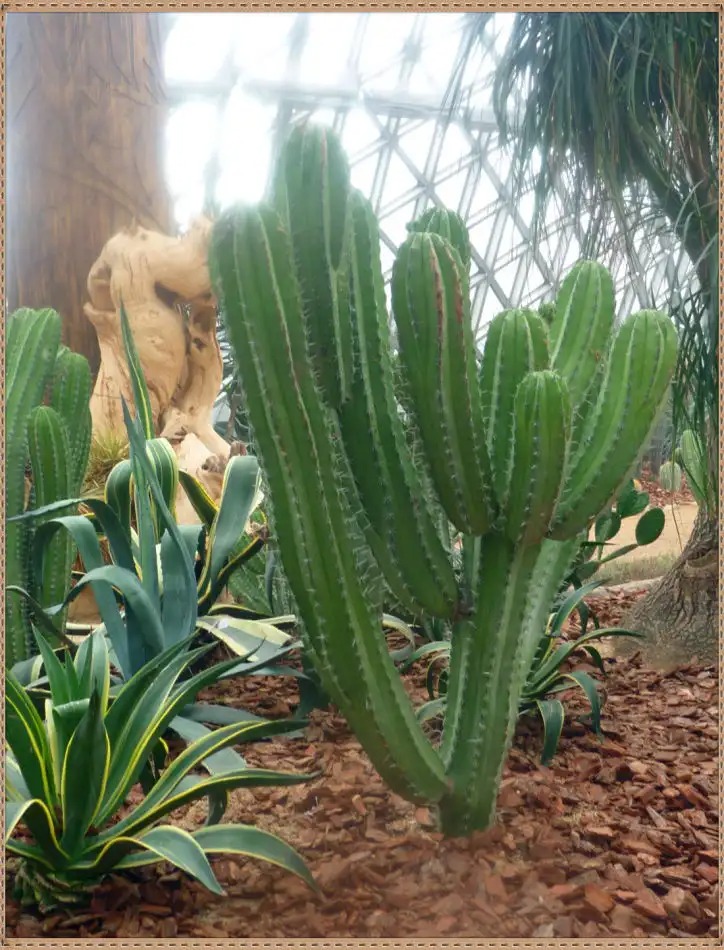 P1060290
P1060290
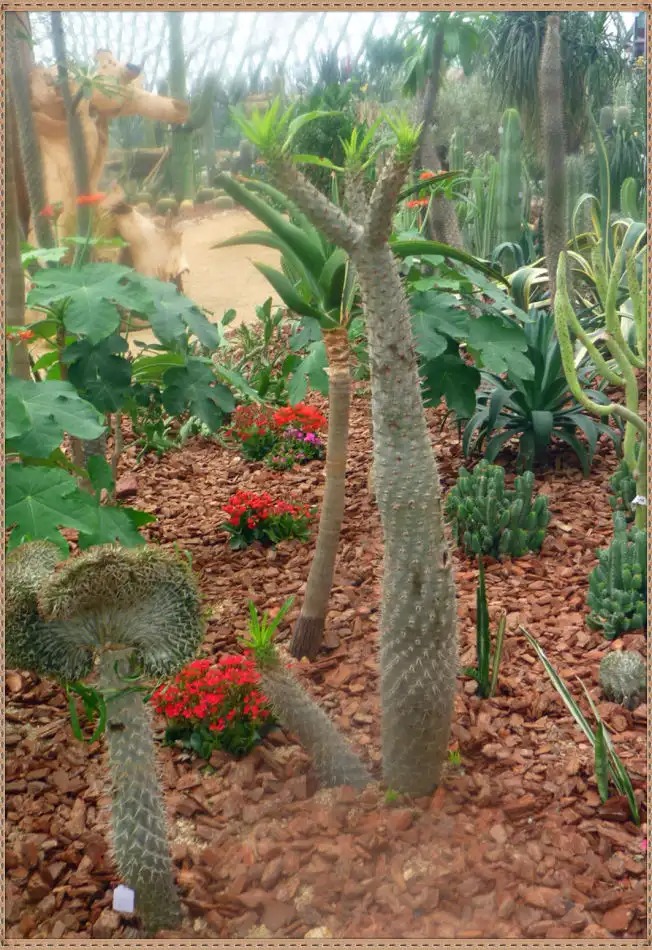 P1060291
P1060291
The Yalong wood
is a perennial evergreen fleshy woody shrub or small tree. The Yalong wood has a peculiar shape, with gray-white stems covered with thorns and leaves growing in between. The plant can grow to 3 to 5 meters high in its native habitat, but has few branches. The stem epidermis is white to gray-white with fine cone-shaped thorns, and the fleshy leaves are long ovate to heart-shaped, often growing in pairs, with large leaves green and small leaves gray-black. The inflorescence is about 30 cm long, and the small flowers are yellow or white-green.
Due to its rarity, the entire genus is listed as a second-class protected plant by the Convention on International Trade in Endangered Species of Wild Fauna and Flora (CIES).
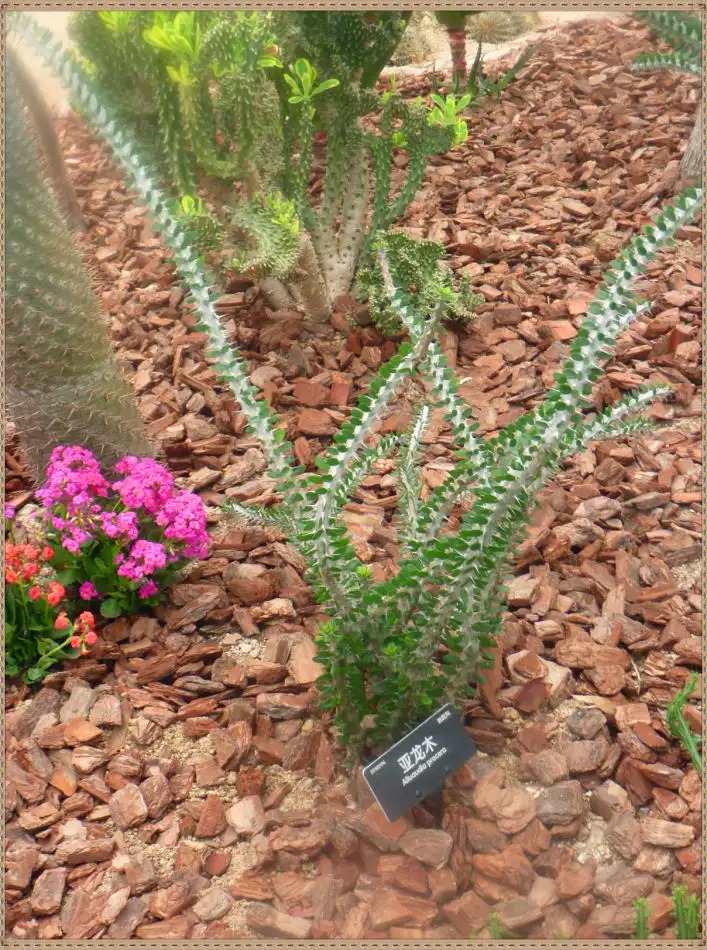 P1060292
P1060292
Euphorbia obesa
is a plant of the genus Euphorbia in the family Euphorbiaceae, native to Africa. It grows fleshy brown-green stems in warm seasons and grows in groups. There are gray-green branches at the top, which are fleshy and quadrangular. There are green-brown thorns at the apex, and small yellow flowers at the top of the areoles.
 P1060293
P1060293
There is a kind of plant with a peculiar shape among the succulent plants of the Euphorbiaceae
family. They are usually very short, with a large round tuber close to the ground, and fleshy branches are constantly generated in the center of the tuber. The branches are sometimes intertwined and entangled with each other, resembling a group of snakes dancing wildly. People figuratively call this type of plant "Medusa type" (Medusa is a snake-haired monster in Greek mythology).
The Euphorbia calopteris (also known as Yan Mo Qilin) is the largest of the "Medusa type" species of the Euphorbiaceae family, with a diameter of 50_100CM, an inverted cone-shaped tuber with a diameter of 20CM, most of which are buried in the soil, and there are as many as 20 branches, with many tumors on the branches.
It is native to South Africa, where there is little rain for several months and other plants wither. The Euphorbia calopteris has become the main source of food for livestock. It is said that cattle not only like to eat it, but also have a special strengthening effect on bulls.
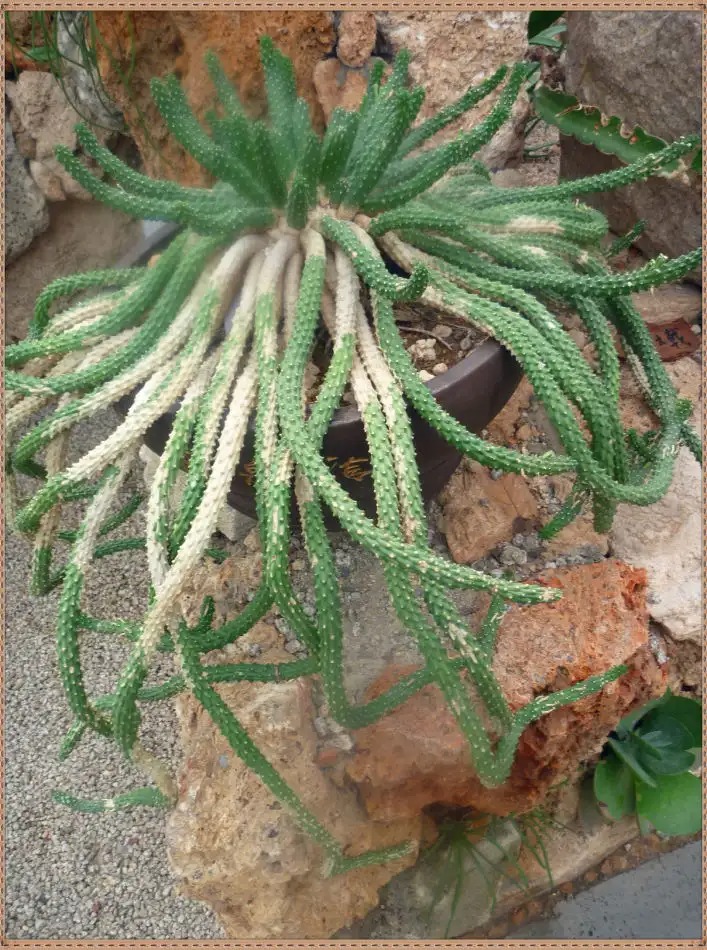 P1060294
P1060294
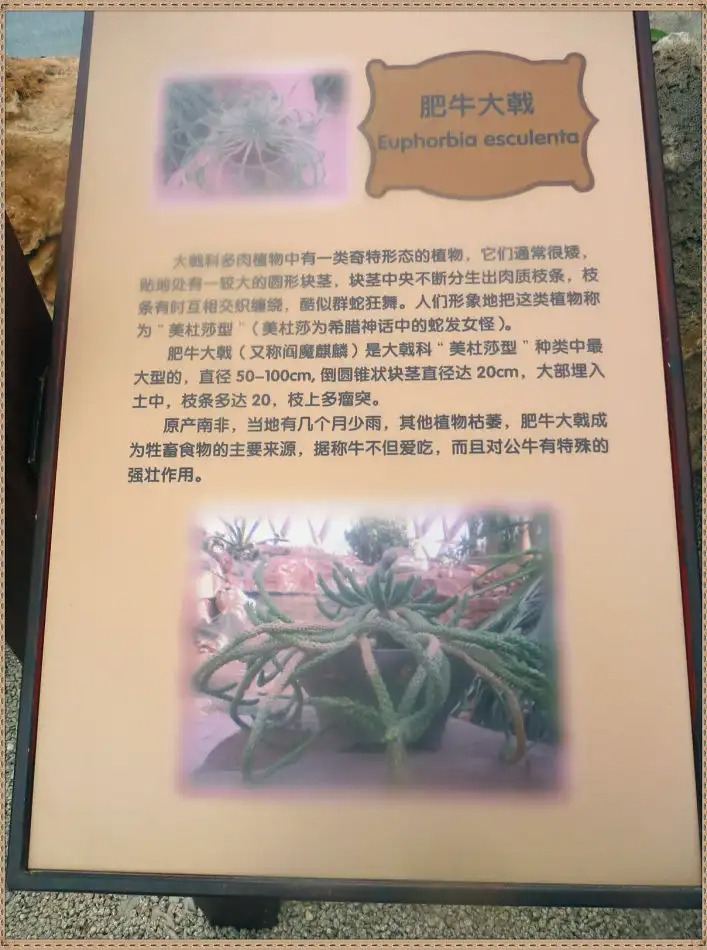 P1060295
P1060295
Green column fascination
is a common deformity and variation phenomenon in cactus flowers.
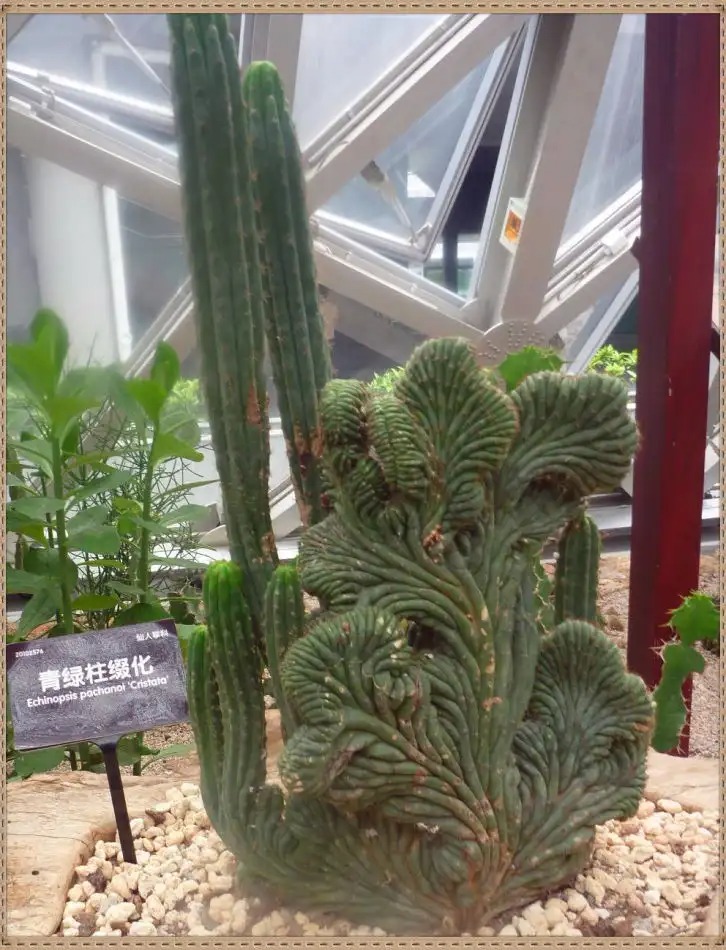 P1060296
P1060296
Caichunfeng Caichunfeng
is a horticultural variety, and its original species, Dijin, is produced in the tropical arid areas of Sri Lanka and India. Its plant shape is peculiar and beautiful, and its colors are rich and varied, which has a high ornamental value.
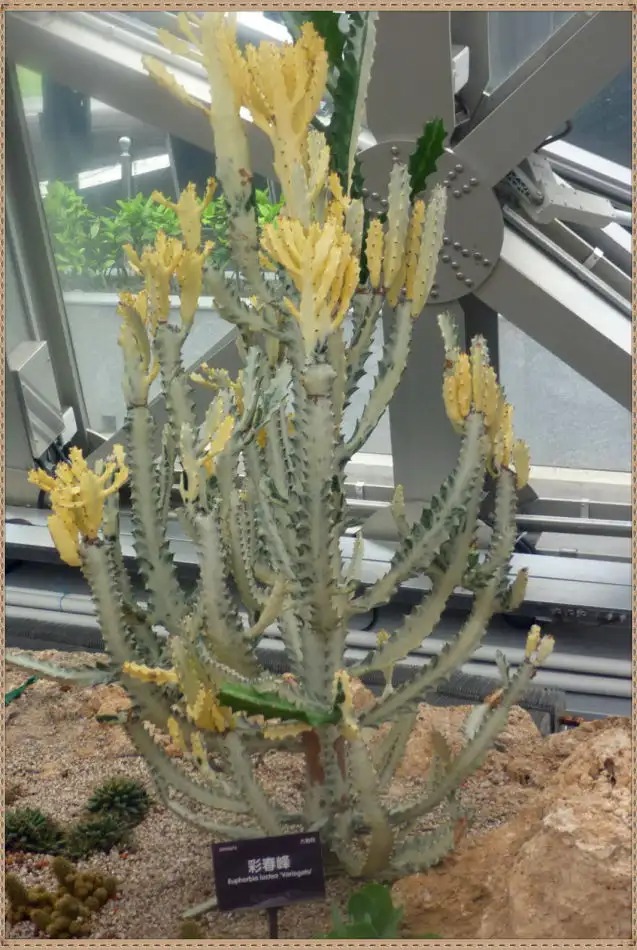 P1060297
P1060297
The long-known ___ Epiphyllum
Epiphyllum is an epiphytic cactus. It grows in sandy soil rich in humus. It likes warm, humid, foggy and semi-shaded environments. It is not suitable for exposure to the sun and is not cold-resistant. It requires well-drained sandy soil. The stem is slightly woody, flat, and has forked branches; the old branches are cylindrical, and the new branches are oblong with wavy edges and no thorns. The flowers are large and grow on the edges of leaf-like branches; the calyx is tubular and red, the flowers are double and pure white, and the petals are lanceolate. The flowers bloom in the evening and wither after 3 to 4 hours.
The branches and leaves of Epiphyllum are green and quite chic. Every summer and autumn night when people are quiet, it shows its beautiful appearance. At this time, the fragrance is overflowing and the brilliance is dazzling. Potted plants are suitable for decorating guest rooms, balconies and reception halls. In the south, it can be planted on the ground. If it is fully displayed on the frame, the flowers will bloom in season, like a large piece of flying snow, which is very spectacular.
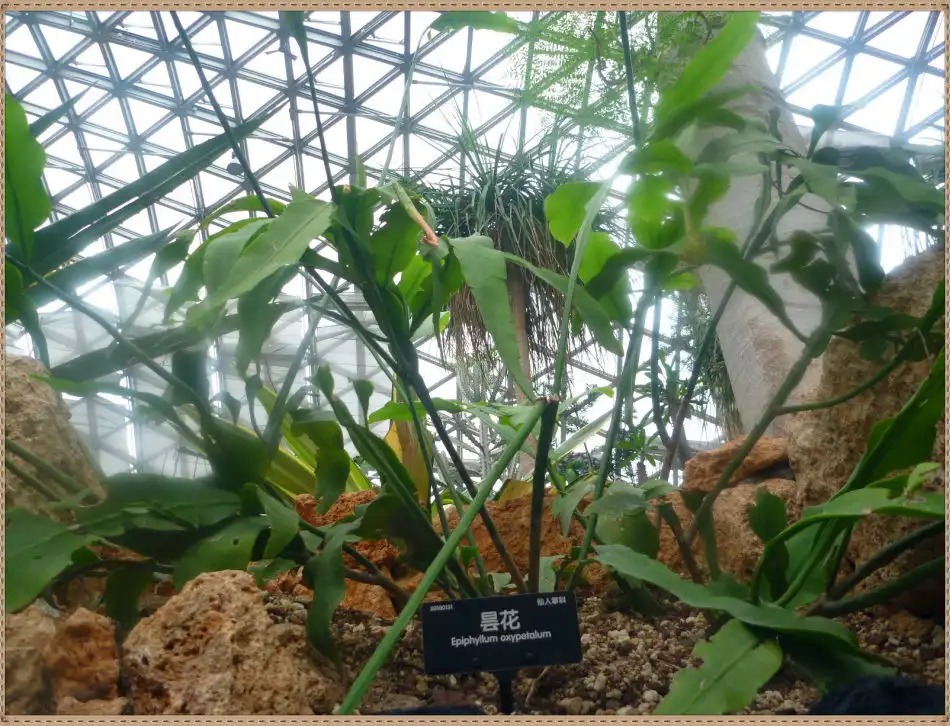 P1060298
P1060298